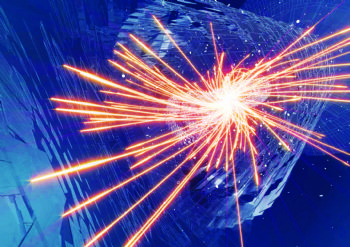
In a world first, CERN (the European Organization for Nuclear Research) (
www.home.cern) has successfully tested “crab cavities” designed to rotate a beam of protons.
The test took place on 23 May, using a beam from CERN’s Super Proton Synchrotron (SPS) accelerator, and it showed that bunches of protons could be tilted using these superconducting transverse radio-frequency cavities.
They are a key component of the High Luminosity Large Hadron Collider (HL-LHC) — the future upgrade of the LHC.
The HL-LHC, which will be commissioned after 2025, will increase the luminosity of the LHC by a factor of five to 10; luminosity is a crucial indicator of a collider’s performance, as it gives the number of potential collisions per surface unit over a given period of time.
In other words, the higher the luminosity, the higher the number of collisions and the more data the experiments can gather. This will allow researchers to observe rare processes that occur beyond the LHC’s present sensitivity level.
Physicists will also be able to perform precise studies of the new particles observed at the LHC, such as the Higgs boson. The newly developed crab cavities will play an important role in increasing the luminosity.
In the LHC, the two counter-rotating beams are not a continuous stream of particles but are made up of “bunches” of protons a few centimetres long, each containing billions of protons.
These bunches meet at a small angle at each collision point of the experiments.
When installed at each side of the ATLAS and CMS experiments (CMS is a ‘sister’ experiment of ATLAS at the LHC), the crab cavities will “tilt” bunches of protons in each beam to maximise their overlap at the collision point, increasing the probability of collisions — and hence more luminosity.
In the coming months, the cavities will be commissioned to their nominal voltage of 3.4 million volts and will undergo a series of tests to validate their operation for the HL-LHC era.
A total of 16 such cavities will be installed in the HL-LHC — eight near ATLAS and eight near CMS.